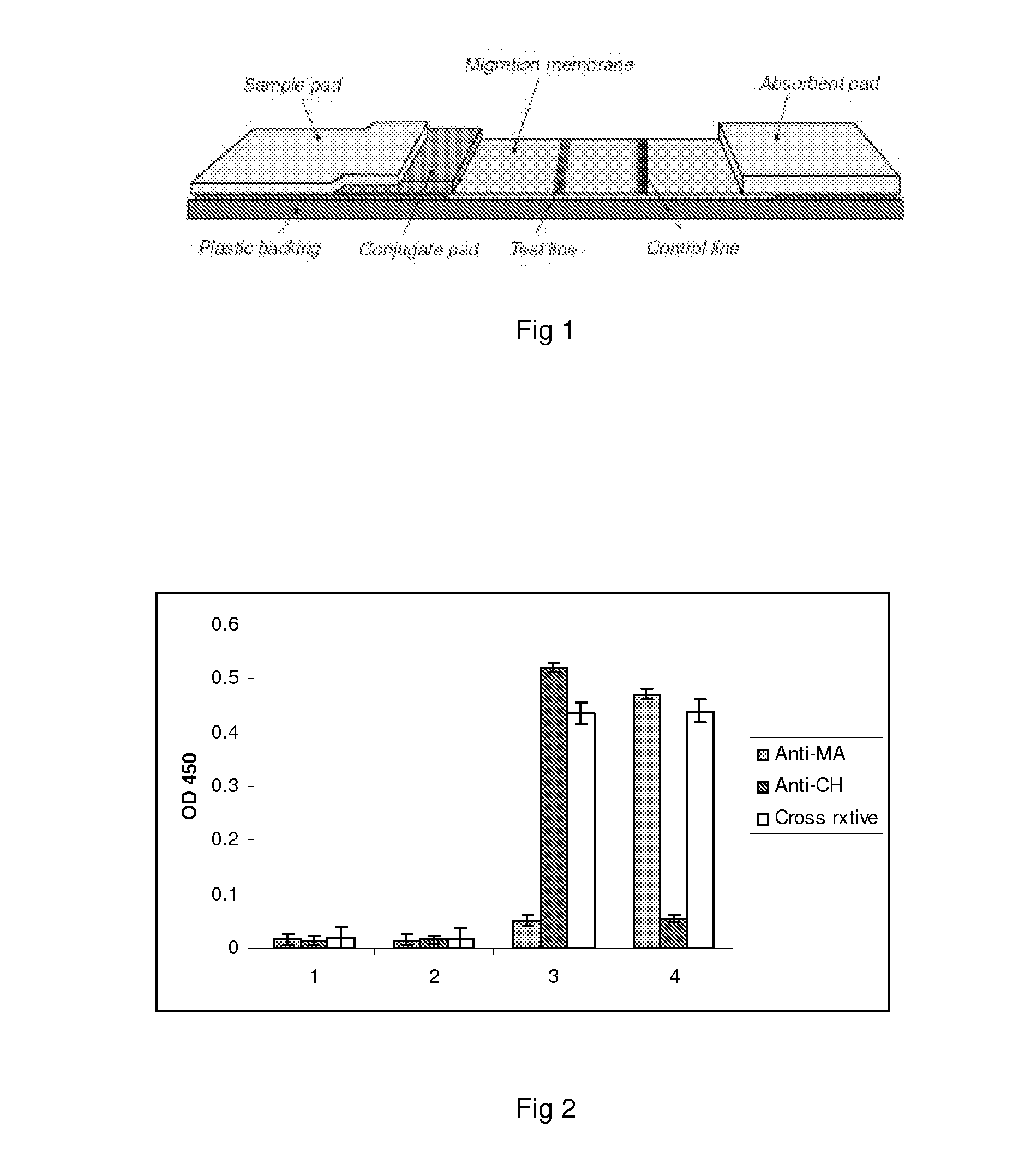Method of detecting surrogate markers in a serum sample
a serum sample and surrogate technology, applied in the field of detecting surrogate markers in serum samples, can solve the problems of affecting the sensitivity of surrogate markers, affecting the detection efficiency of surrogate markers, etc., and achieves the effect of reducing the number of surrogate markers
- Summary
- Abstract
- Description
- Claims
- Application Information
AI Technical Summary
Benefits of technology
Problems solved by technology
Method used
Image
Examples
Embodiment Construction
Generation and Characterization of Recombinant Monoclonal scFv Antibody Fragments to Mycolic Acids and Cholesterol
1 Materials and Methods
1.1 Generation of Recombinant Monoclonal scFv
1.1.1 Phage Display Antibody Library
[0055]A naive semi-synthetic chicken phage display library was used (Van Wyngaardt et al., 2004). The library contains recombinant filamentous bacteriophages displaying scFv antibody fragments. These fragments were derived from combinatorial pairings of chicken VH and VL immunoglobulin domains. VH and VL domains are linked by an interpeptide segment consisting of the sequence (GGGGS)3, enabling a fold typical of single variable fragments.
1.1.2 Phage Display Antibody Selection
[0056]A selection of the phages displaying mycolic acid reactive scFv's was conducted by several panning rounds. Maxisorp immunotubes (Nunc-Immuno Tubes, Nunc, Denmark) were coated with 100 μg / ml mycolic acid (Sigma Aldrich) dissolved in distilled hexane, after which the hexane was allowed to evapo...
PUM
| Property | Measurement | Unit |
|---|---|---|
| Strength | aaaaa | aaaaa |
| Reactivity | aaaaa | aaaaa |
Abstract
Description
Claims
Application Information
 Login to View More
Login to View More - R&D
- Intellectual Property
- Life Sciences
- Materials
- Tech Scout
- Unparalleled Data Quality
- Higher Quality Content
- 60% Fewer Hallucinations
Browse by: Latest US Patents, China's latest patents, Technical Efficacy Thesaurus, Application Domain, Technology Topic, Popular Technical Reports.
© 2025 PatSnap. All rights reserved.Legal|Privacy policy|Modern Slavery Act Transparency Statement|Sitemap|About US| Contact US: help@patsnap.com

